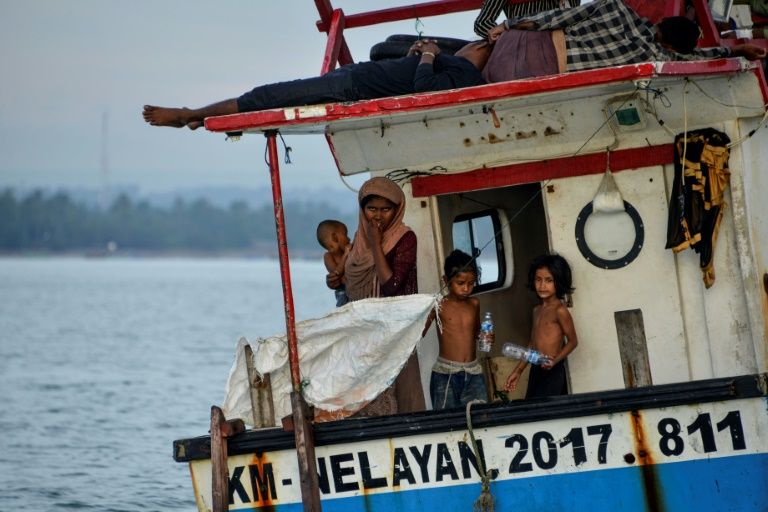Rohingya man reunites with ‘dead’ family
Nemah Shah believed his wife and daughter had died at sea, until he saw pictures online of them arriving in Indonesia. ©AFP CHAIDEER MAHYUDDIN
Lhokseumawe (Indonesia) (AFP) – Weeks after a funeral for the wife and daughter he thought had died at sea trying to reach him, Nemah Shah was stunned when he saw online images of them emerging from a refugee boat in Indonesia.
What followed was an incredible reunion story retold to AFP during an in-depth investigation into human trafficking of the Rohingya, a stateless Muslim minority group driven out of Myanmar.
As he was still grieving the loss of his family, Shah said he was astonished to see his wife and daughter among a boatload of 100 Rohingya refugees who landed near the Indonesian town of Lhokseumawe in June.
“When I recognised my wife and daughter,” Shah said, referring to the online images, “it was the happiest day of my life.”
Video and photos taken of the landing by international media, including AFP, showed Shah’s wife and daughter among those getting out of a rickety boat pulled to shore by concerned locals.
Shah was in Malaysia, where at least 100,000 Rohingyas live as refugees, working as a labourer in the construction industry earning the equivalent of $500 a month.
The arrival of the boat was huge news in the Rohingya community there and Shah, 24, watched the footage online.
Through the Rohingya network, Shah was eventually able to connect with his wife, Majuma, by mobile phone.
The call lasted just a few minutes. It was enough for Shah to promptly quit his job and start making plans to get to Indonesia.
Months later, and against all odds, Shah was reunited with Majuma and their six-year-old daughter Fatima, living together in their new home — a makeshift cubicle in former school buildings in Lhokseumawe that Indonesian authorities have turned into a camp for the refugees.
– ‘Never see her again’ –
Rohingya have for decades endured persecution in Buddhist-majority Myanmar, where they are not recognised as citizens, and smuggling routes out by land and sea have long existed.
Shah said he fled Myanmar six years ago, ending up in relatively affluent and Muslim-majority Malaysia.
He left behind Majuma and his then infant daughter.
They too soon escaped Myanmar, but only across the border into neighbouring Bangladesh where they joined a million Rohingya living in dire conditions in refugee camps.
After years of saving tiny amounts that Shah was able to send back to Bangladesh, Majuma was able to pay people smugglers for a spot on a boat to Malaysia.
But while traffickers promise their passengers will make the roughly 4,000-kilometre (2,500-mile) journey to Malaysia in a week, the reality can be months at sea, without even making it there — or worse.
More than 200 are believed to have died at sea this year, according to the UN’s refugee agency, with starvation, illness, dehydration and beatings by the smugglers among the reasons.
Majuma and Fatima left in February. But after Shah did not hear from them for months, he gave up hope and held a funeral ceremony.
“I told myself I would never get married again and always remember them,” he said.
Inside the Lhokseumawe refugee camp, hundreds of Rohingya anxiously wait for news about their future.
Like the others, the newly reunited family is reliant on handouts and unable to travel — a far cry from the hoped-for life in Malaysia.
“Sometimes it upsets me because I had freedom in Malaysia. I could work,” Shah said.
But reuniting with his wife and daughter trumped all else.
“By the grace of God, I found them here at the camp and we’re now reunited.”
Disclaimer: Validity of the above story is for 7 Days from original date of publishing. Source: AFP.


